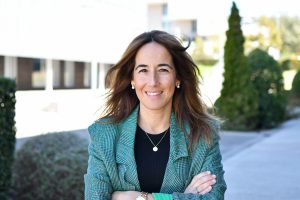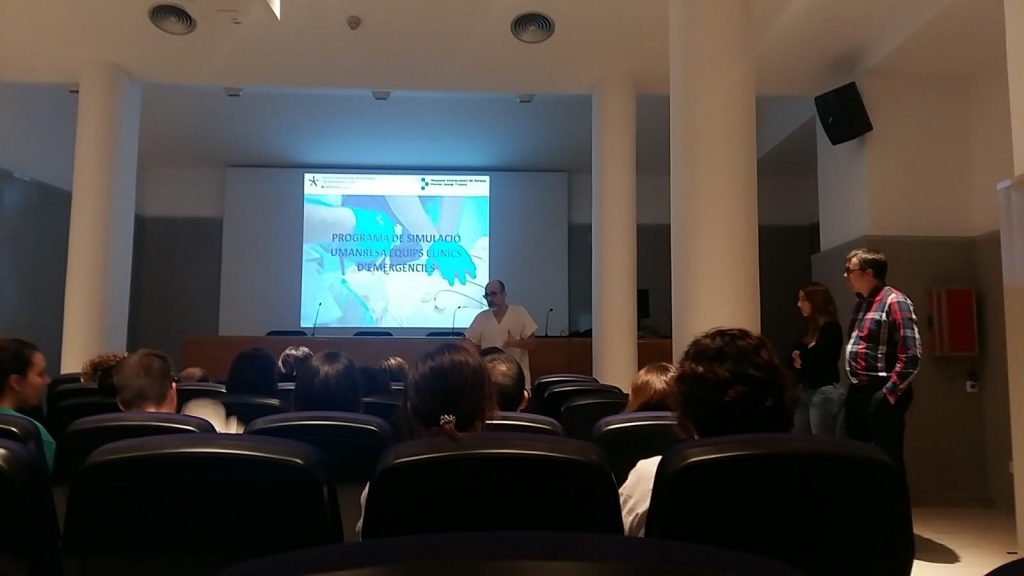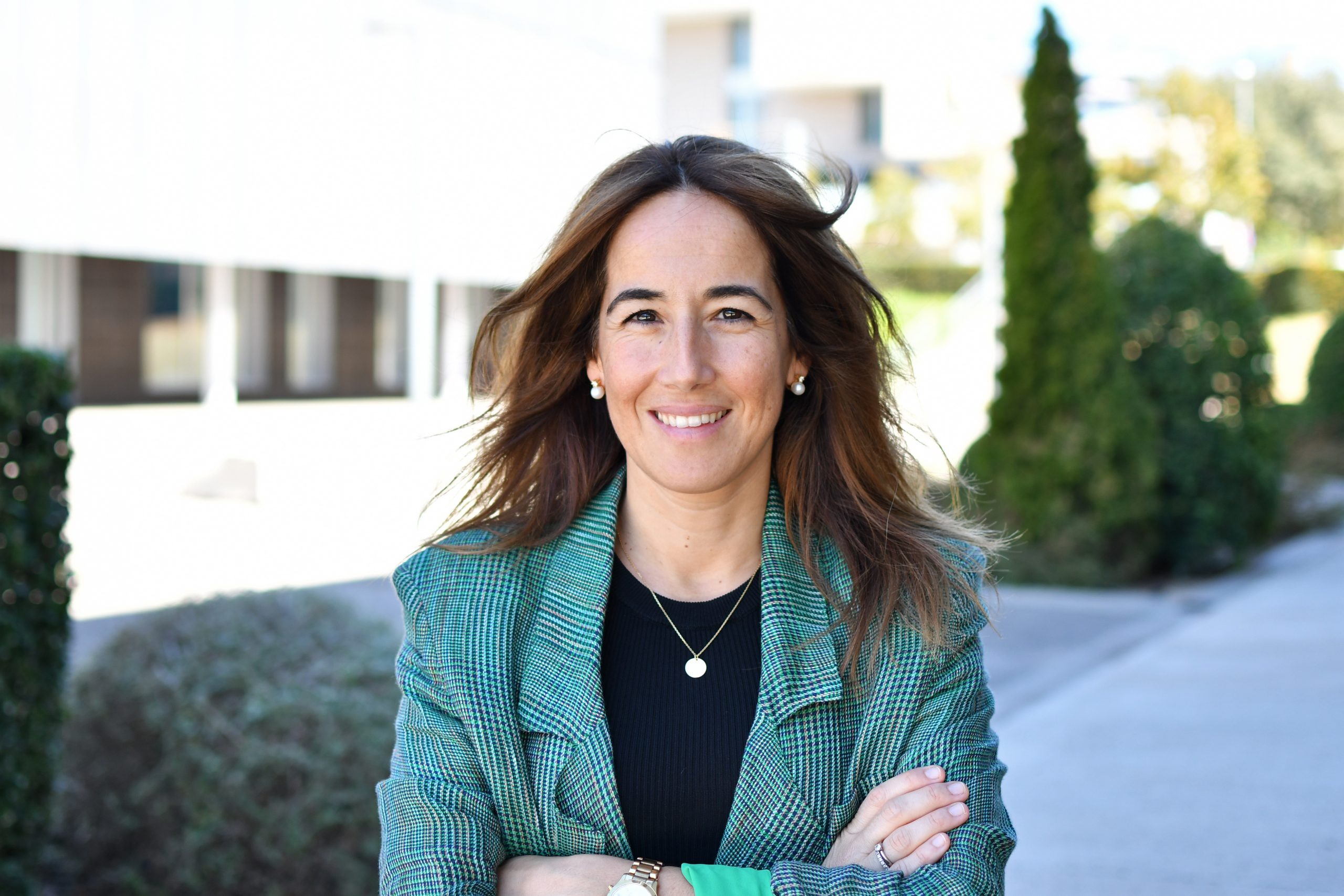Introducing the president of SESSEP, Aida Camps, who talks about her passion for simulation, how she came to lead the Spanish Simulation Society and her plans for the future.
Today we talk to Aida Camps, current president of the Spanish Society of Clinical Simulation and Patient Safety (SESSEP). With a degree in Nursing and a degree in Psychology, she is head of the International Centre for Innovation in Simulation at the UVIC-UCC University, UManresa campus.
In this interview, she highlights the importance of clinical simulation to improve patient safety and professional training. As leader of the Master’s Degree in Clinical Simulation Methodology, she values simulation training as a transformative tool and, as president of SESSEP, she seeks to expand the reach of the society, promoting collaboration and inclusivity.
Aida Camps Gomez
Graduate in Nursing. Degree in Psychology.
Head of the International Centre for Innovation in Simulation at the UVIC-UCC University, UManresa campus.
Co-designer and Coordinator of the Master’s Degree in Simulation Methodology applied to Health and Social Sciences at UManresa.
Responsible for the Fellowship programme in Simulation and Patient Safety at UManresa.
Simulation facilitator in the professional field.
President of the Spanish Society of Simulation and Patient Safety (SESSEP).
Co-author of the book ‘Simulación: De la estratègia institucional al caso concreto’ (Ed.Graó)
Co-author of the book ‘Simulation as a teaching methodology in university classrooms’ (Ed.Octaedro).
Q1 Area of interest in simulation?
My areas of interest in simulation are defined by my professional and personal background. I am a nurse and a psychologist, I have worked in both professions and this has allowed me to learn about many areas. When I worked as a nurse, I could see how clinical teams were subjected to a very high level of demand, where decision-making was the order of the day, teamwork, communication, patient safety and a unique feeling of teamwork among all. On the other hand, in the psychology faculty we were taught the importance, before seeing a patient, of generating personal work on ourselves, so as not to harm ourselves with our projections, in fact we were already doing simulations and the teachers then generated a reflective space for analysis.
I always thought that this would be an asset for us clinicians… and the years went by, so I was 25 years old… and 12 years ago when I learned about simulation at university, I felt totally aligned with simulation and I didn’t even know all the dimensions that it represents.
For all these reasons, my main area of interest is to generate a culture of safety in professionals through clinical simulation, a key aspect for professionals to see its potential. The simulation with its debriefing should aim to “make the participants shine”. The professionals do an excellent job and although mistakes may occur, they are a source of learning that must be analysed. As simulation educators, we must work with the teams from a more appreciative perspective. I have been leading the Master’s Degree in Clinical Simulation Methodology at the University for 9 years and, although it has been a process of hard work, it has been even more of a learning process and, sincerely, I consider simulation training to be extremely important, not just “I am a clinician and I am learning the simulation technique”, but to work so that we have more than that: to provide clinical professionals with a broad, varied and rigorous vision on a didactic, psychological and evaluative level, avoiding sophistication, which is often only within the reach of large institutions.

Q2 What work are you most proud of?
Everything I do, I do it together with other people, I think that one thing that simulation has given me is the challenge of knowing how to adapt and work with a variety of opinions and points of view, especially in simulation, and I am proud to have achieved many things together with almost all of them.
On a professional level, there are two things that stay with me:
1- Having been a direct participant, together with my university, in generating the University Master’s Degree in Simulation Methodology or the Fellowship programme in simulation and patient safety: I think we saw that simulation is not only a learning methodology, but a key tool for improving many aspects, above all patient safety, and that it could not be just a short course, but had to be an educationally transformative experience for the clinical professional. Where pedagogues, psychologists, health personnel, researchers and technicians would share a deeper construction of simulation, with the aim of promoting a “change of chip” in the clinical professional, which would help them not to be clinicians doing cases but simulation educators.
2- I dedicate my day-to-day work to thinking about new training programmes in simulation, even generating and thinking about how these can help in other professional fields, in the social and educational spheres. This makes me rediscover simulation and its potential.
3- To have been involved in SESSEP projects, in the organisation of its congresses, in the generation of the audit programme and in the promotion of the work of the patient safety committee by generating the course on Simulation and Safety and patients.
Q3 What motivates you most?
Professionally, I am motivated by many things, but above all by challenges. Wherever I have to think, work and generate from scratch, that’s where I go. New projects in simulation are always a challenge, spending time thinking about how to achieve it and trying it out motivates me a lot.
Visualising the results of the simulation also motivates me a lot, when I see a team or people who, in the debriefing, are capable of building new perspectives and even stop doing things, transforming themselves…. I am passionate about it, because it allows me to be aware of the permeability of professionals (doctors, nurses, technicians, managers, directors…) who, with a brilliant career, are capable of self-evaluating and continuing to learn something new, their humility. Seeing the results of all the work is very motivating and at the same time helps you to appreciate the talent of the people.
Q4 How did your professional career lead you to be elected president of Sessep?
I came to SESSEP in 2013, during the celebration of its II Conference at the Military Health Hospital, at a time when I had little knowledge of simulation, it was difficult to explain basic differences between simulation and role playing, between competency assessment, OSCES….. And being with colleagues from SESSEP was a gift. Since then I have always been in it. I started working in the nursing group where I learned a lot.
Then in 2015 I joined the board as secretary, then vice-president and finally president. It has been years of working and building up with the different members of the board.
So my path to the presidency has been a natural process and daily work, in fact when I joined the board my goal was not the presidency, but to work, to learn with people with great experience in simulation and with a humble spirit… and if you look at the history of SESSEP and its board they are all exceptional.
Q5 What is your role and what are the biggest challenges you have faced so far?
The presidency is about being willing to do different things:
⁃ Working
⁃ Knowing how to listen and facilitating that the board can work autonomously with objectives to be achieved together.
⁃ Ensure / Encourage the next board nominations and next congress venues for the continuity of SESSEP.
⁃ Create synergies with other societies by raising awareness of the status and value of simulation in our country.
⁃ And for SESSEP to be a society that can continue to be of value to its members based on their expertise.
Since I have been on the board of SESSEP there have been many challenges, from economic, management, logistical, the pandemic… but I think it is about working and moving forward. Sometimes the work is more visible, sometimes not, but regardless of this, the focus is to have clear objectives and for the sum of the different boards to generate results. Not everything begins and ends with a presidency; the work done by other members of previous boards has brought us this far. And our responsibility is to take advantage of that synergy and add to the current one. This year we have been able to work on:
-Programme for on-site accreditation of simulation training programmes (audit).
-Generation of the simulation and patient safety course.
-Newsletter to keep in touch with our partners.
-Review and updates of centres/simulation sites on the status of the partner database
-Constant economic management so that it can be of benefit to the member with actions that promote the generation of research grants and other actions linked to the congress.
All this entails work and we continue with great desire to provide more elements that promote and give quality to the simulation in our country.
Q6 What is the hallmark you wish to stamp on these two years?
For SESSEP to have more future options, to ensure that our field of evolution is not only, for the most part, educational, but also clinical. I believe that we must contribute the knowledge, experience and vision of society and, at the same time, that other societies contribute to us. All of this should be materialised both at congresses and in specific activities with other societies at national and international level.
We also want to broaden the range of synergies with other societies, as the agreements generated so far allow for little joint proactivity. We think that we can help by sharing SESSEP’s expertise in quality simulation, debriefing and also linked to research with other societies, and we are working towards this.
In SESSEP there are people who have been giving support and working hard, some are in the working groups, generating important work, others contributing their work at congresses, and we believe it is important to generate more proximity with the member, not to explain what the Board of Directors does, but so that the professional value and work of the member can be visualised.

Q7 What are the most exciting areas of SESSEP?
Its people. I think it is a society with a very important and unique human value. When you are at a SESSEP congress you understand and experience this. There are people who are there from the beginning, who perhaps we do not know, but they are doing a unique job in our country, as directors of universities, as heads of simulation centres, as teachers, simulation technicians, as researchers, as doctors, as nurses and not only this group but also a group of people in the field of health: psychology, physiotherapists, pharmacists, nutritionists… the attitude and professional variety is something extremely enriching.
It is also a society with a high quality teaching content:
⁃ Course on the acquisition of basic competences in simulation.
⁃ Course on Simulation and Patient Safety.
⁃ Programme for on-site accreditation of training programmes.
⁃ Interdisciplinary student days (I am passionate about their character so in tune with simulation, they are non-competitive and non-evaluative).
⁃ E-CRM course
⁃ Simulation technicians’ day (becoming a consolidated section of the congress).
⁃ The annual Patient Safety Webinar
⁃ Simulation Training Accreditation Programme (don’t miss its website)
⁃ SESSEP Research Grant
⁃ Award for the best paper of the congress
And more areas to come….

Q8 Are you the second or third female president… how do you feel and how do you motivate?
Well, I hadn’t thought of it as such, that I was the second woman president of the SESSEP :), I honestly don’t think it’s anything special.
In society and especially in the clinical or health field there are many women, we are the majority and with a situation of many possibilities and valuation. I think that what will happen naturally is that the presidency will be led by more women.
For me it is more a question of transmitting/motivating that being in the presidency or in any position in the board of sessep has an “emotional salary” value. You learn, you share, you work with magnificent professionals, and it also helps you to break the patterns and forms that one has from their own training or from always being in their institutions, and I believe that this is of great value. Apart from moments of great complicity, creating friendships.
If there is one area where I would encourage more medical professionals to get involved in simulation, the nursing community has a lot of experience in simulation and is doing a great job, already well established in the faculties and at the clinical level. Medicine has also done this, but there is still a long way to go, especially at the in-situ level in hospitals and in specific speciality areas.
Q9 Nowadays there is a lot of talk about diversity and inclusiveness, what specifically does SESSEP do?
It seems to me very interesting this topic, in fact, we try to be it, from the Board of Directors we always have conscience to remember that we represent the Spanish society and therefore that we arrive and give voice to all the places that configure it in the different dimension is of SESSEP (its board, its scientific committee, papers, candidacies …).
Also to make an analysis to better understand which professionals make up the society to facilitate and/or enhance access to all equally.
At the same time, to understand that simulation is not only for the clinical field, but also to give voice to the experiences of other groups in the field of health that do such excellent work.
For me, SIMZINE is a great example in providing diversity and inclusiveness to all, so from SESSEP thank you very much for giving us this opportunity.
READ ALSO






























